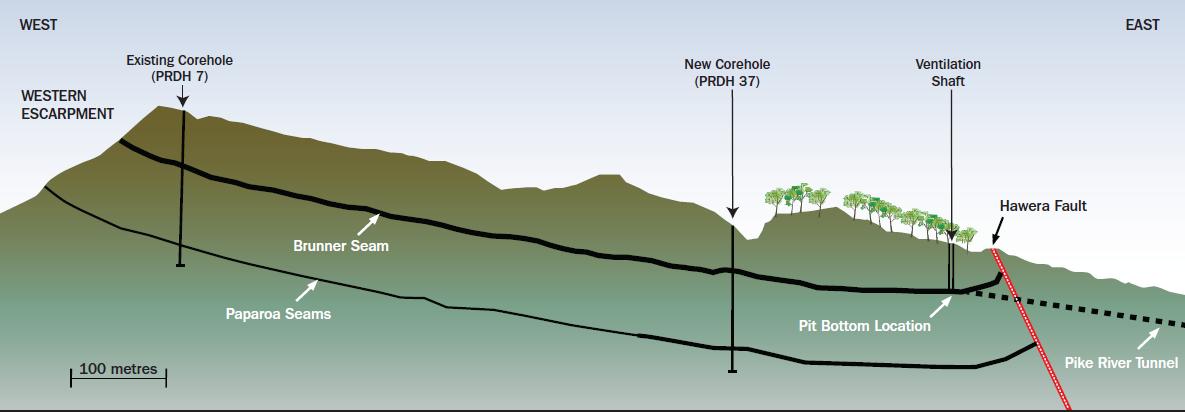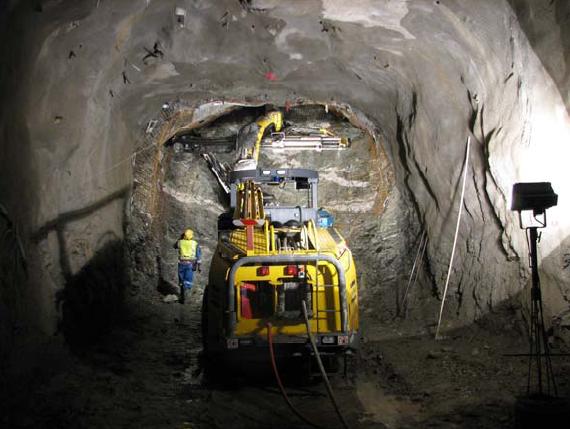19 November 2010
The Pike River Coal Mine accident
Posted by Dave Petley
Although the key focus of my research is landslides, I also spend some of my time working with mining companies. Thus, the Pike River accident in New Zealand is of interest. The blast today appears to have left at least 27 miners trapped underground; at the time of writing there has been no contact with the missing workers, although rescue operations are clearly underway. All modern mines have fully trained mine rescue teams that lead the way in such events. They regularly liaise with the emergency services, and a contingency plan will be in place. Note however that entering a coal mine after an explosion can be very dangerous, with risks including toxic fumes, dust, collapses, and further explosions. For this reason the team may not enter the mine for some time to come.
The mine itself is comparatively new, extracting premium hard coking coal, used primarily for metal smelting. The planned annual production level is one million tonnes, mostly for export, although current production is less than half of this. The first shipment was made early this year. The good news about such a new mine is that, unlike the San Jose mine in Chile, it will have been constructed with two exit routes for the miners (see below).
The cross section of the mine plan is provided in an overview document, which is available here (caution – pdf). The entrance adit is off to the right of the image.
As the cross section above shows, one aspect of this mine that is important is that the primary access roadway is via an inclined drift (roadway) rather than the conventional vertcal shaft that most people associate with coal mines. This inclined roadway is large – 5.5 metres wide and 4 metres high – see image above (source – caution pdf).
A key part of the rescue may be the presence of a large vertical ventilation shaft from the mine workings to the hilltop, shown to the left – source). This shaft, which appears to have a cross section of 4 square metres, may provide an additional access route for the rescue teams. However, above ground access to the shaft is by helicopter only, so the logistics will be challenging. This shaft has been subject to rockfalls in the past, and indeed a substantial section had to be rebuilt in 2009, but hopefully it will provide a key potential rescue route.
There is a very interesting pdf article about the development of the mine online here (caution – it is a pdf). This article was written by Gordon Ward, the Chief Executive Officer of the mine. This article includes the image below, which shows the nature of the mining operations. At the time that this article was written the tunnel had yet to intercept the dipping coal seam (the remaining tunnel length then to be produced is marked “remaining section to tunnel”). The tunnel was intended to intercept the tunnel at the location of the Hawera Fault.
The rescue operation will probably be very challenging, so do not expect rapid information to emerge from the onsite teams, despite the undoubtedly frenzied media interest. I will try to keep this updated over the weekend as news emerges.






 Dave Petley is the Vice-Chancellor of the University of Hull in the United Kingdom. His blog provides commentary and analysis of landslide events occurring worldwide, including the landslides themselves, latest research, and conferences and meetings.
Dave Petley is the Vice-Chancellor of the University of Hull in the United Kingdom. His blog provides commentary and analysis of landslide events occurring worldwide, including the landslides themselves, latest research, and conferences and meetings.
This is of interest too – written by then GM Peter Whittall in 2006 http://ro.uow.edu.au/cgi/viewcontent.cgi?article=1042&context=coal
http://www.smh.com.au/world/new-blast-all-miners-feared-dead-20101124-1862p.html?from=smh_sb